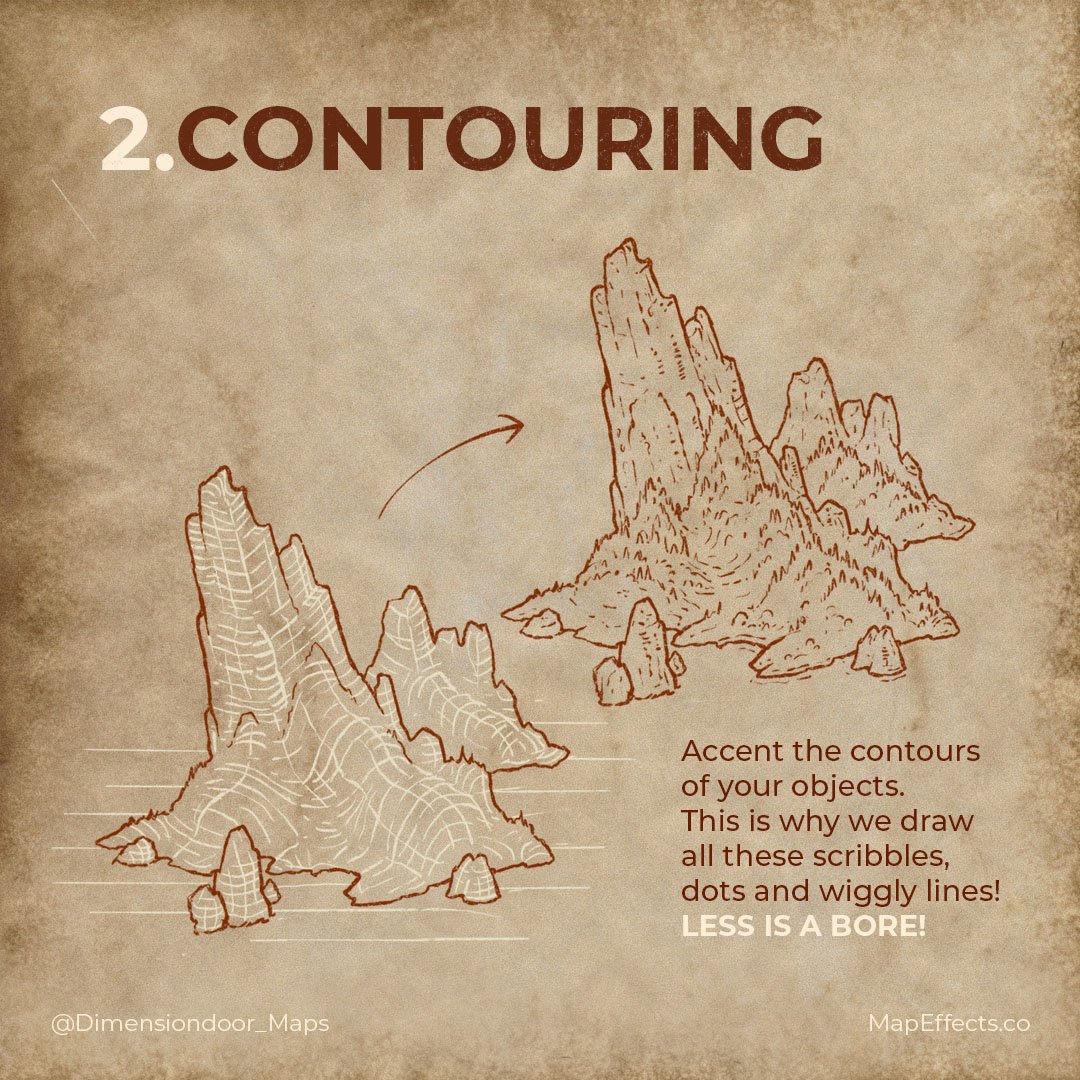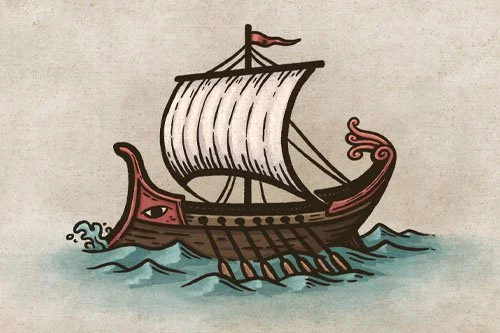7 Ways to Create Depth on Your Fantasy Maps
Do all the features on your fantasy map look a bit…flat? If you want to quickly step up the quality of your maps for the book you’re writing, or your next rpg campaign, then learning how to add some depth to can go a long way. If you are at all familiar with the work of Gerralt Landman, then you’ll know he’s a master at creating maps with a ton of dimension as you can see from the image above.
In this special guest tutorial, Gerralt will share with you some of his secrets and the things he looks for to help you add more depth to your next fantasy map. Let’s get started!
1. Overlapping
One of the easiest and yet most powerful ways to add depth is to look for opportunities to make objects overlap. You can see the silhouette on the right works just fine, but by shifting those rock formations around so they overlap you end up with a much more visually compelling composition.
2. Contouring
Sketching contour lines and then going over them with little scribbles, dots, and wiggles is a great way to add depth to an object. Less is a Bore!
If you want to learn more about contour lines, check out Gerralt’s previous tutorial here:
Cartographer’s Liner Brush Field Kit
$29 | For Procreate, Photoshop, & Clip Studio Paint
“These brushes really helped me to make the line work in my maps stand out. They’re incredibly versatile and every brush has it’s own unique style.” - Gerralt Landman
3. Shading
Shading can feel like an overwhelming topic, which is why it’s important to first understand how light interacts with a simple object like a sphere. Knowing all the areas of shading is important to create depth!
Once you understand the basic principles, you can easily apply it to more complex objects like mountains, trees, and canyons.
Digital Artist Tip
In order to do my shading, I use a layer with the blend mode set to “Hard Light” and another layer set to “Add” to give a pop of highlights
4. Placing
Where you place objects in your composition matters if you want to create depth. If you want a feature to appear further away, then shift is slightly higher in the composition than your foreground object. This will cause the feature in the foreground to appear closer to the viewer!
5. Shrinking
This tip is connected to the previous one on placement. Because it’s not enough just to place an object higher, you also need to make it smaller and use thinner lines. This will cause it to look further away as you can see less detail.
6. Atmosphering
Yes, I just made that word up…but hopefully you’ll remember it! Atmospheric perspective makes object further away appear faded and lighter in value. Almost has if you’re putting a slight haze over it, which incidentally, is exactly what’s happening.
Working with Color?
If you’re working with color, there is an extra element to keep in mind. The further an object is from the viewer the more the yellows, and then the reds will fade. This is why if you look at a landscape with multiple mountain ranges, they get a gradually more blue hue the further they are from you.
7. Framing
Adding some kind of frame or border creates a magical window which gives focus and draws the viewer into your artwork. It really is the finishing touch to bring everything together.
Don’t be afraid to cut objects off to give the impression that your landscape extends beyond the frame. This causes it to feel like there is more to be discovered and adds a sense of mystery or wonder to the piece.
Thank You Gerralt!
Gerralt (DimensionDoor_Maps) is a map illustrator based in the Netherlands. His amazing work has been featured in fantasy books like The Fireborn Epic, as well as the board games Open Waters and The Company of Merchant Adventurers.

















